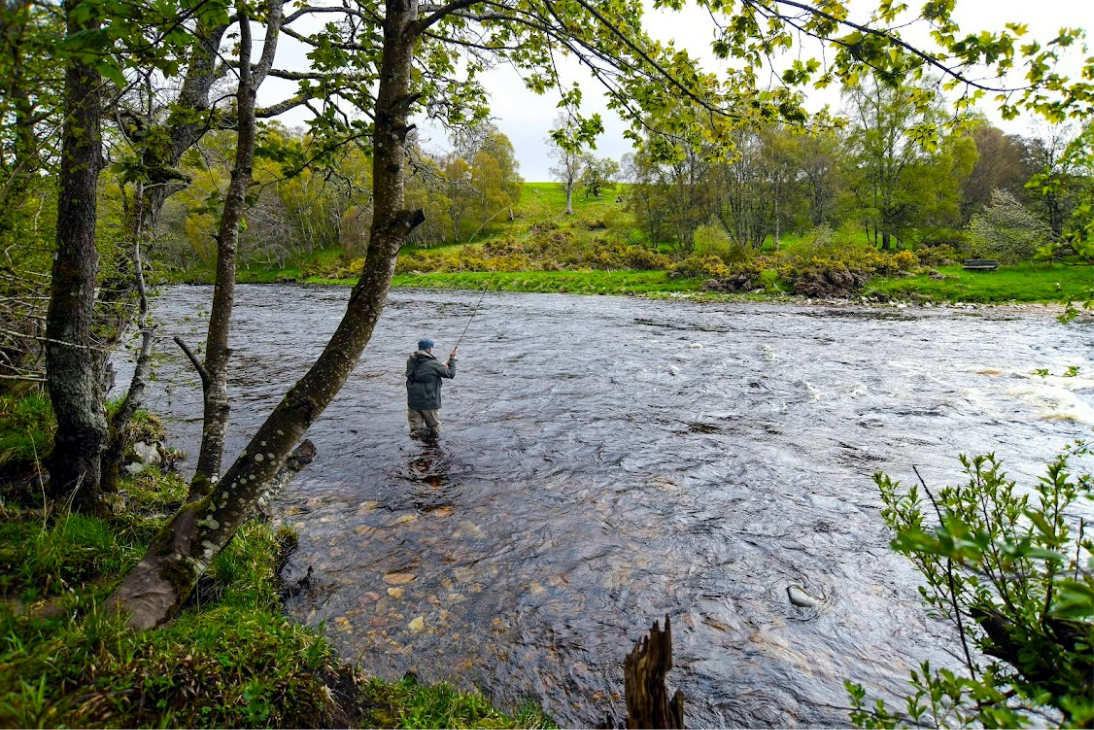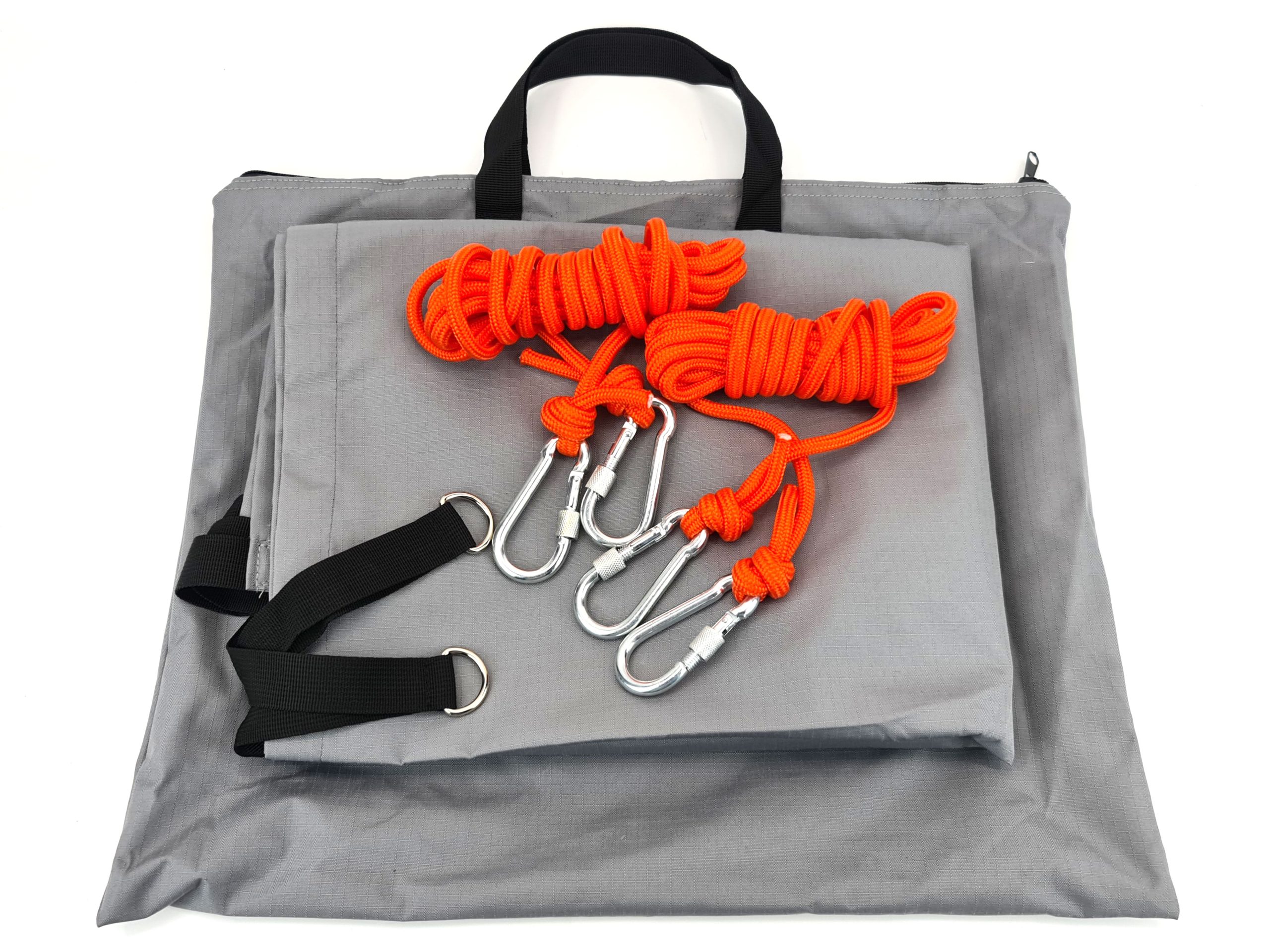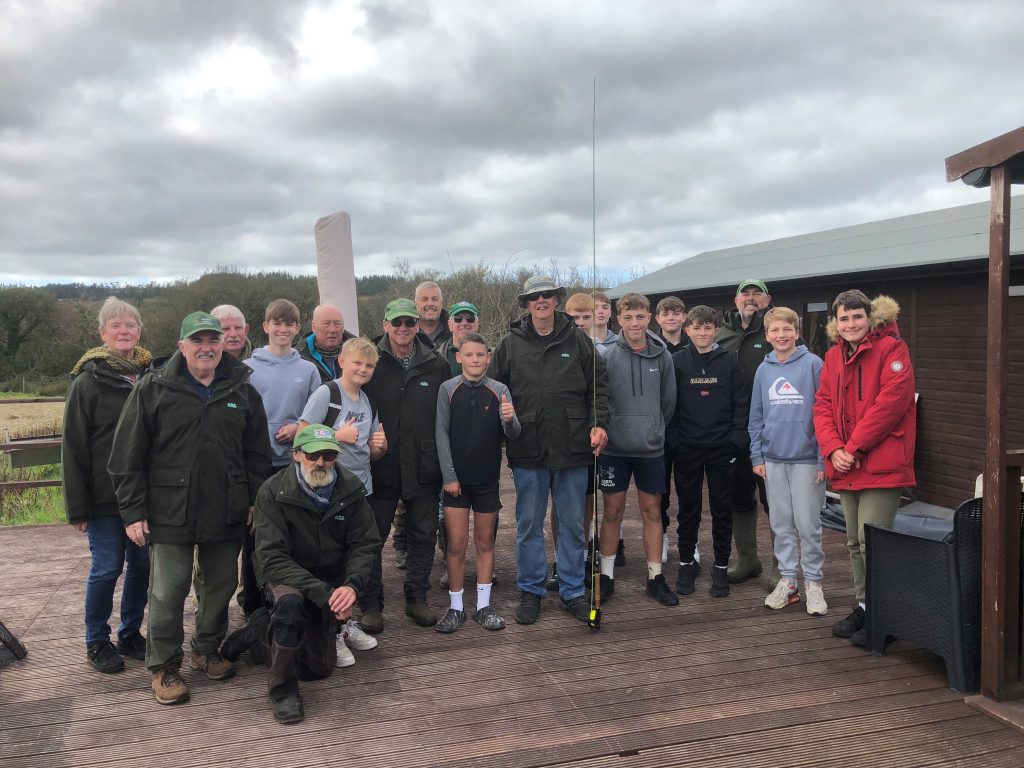HOW TO TIE THE DADDY-LONGLEGS STILLWATER FLY
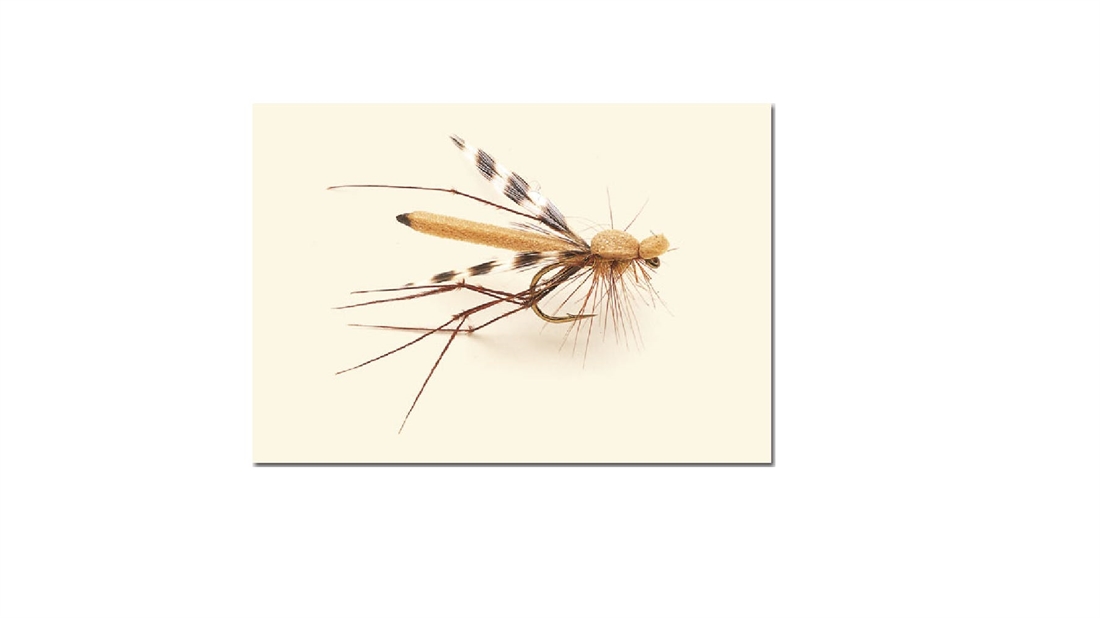
When tying big, bushy dry-flies it is quite possible to get away with using a big, heavy longshank hook. However, with patterns imitating insects such as the daddy-longlegs, the need to tie them as sparsely as possible while still making them float means the weight of a longshank is too great.
Here the technique of using a detached body comes into its own. This is where the body is tied quite long but protruding past the bend of the hook rather than being wound around the shank. The result is that a smaller hook can be used, producing a lighter fly that is easier to cast, floats better, and hooks more fish as there is less resistance on the take.
Various materials may be used to form a detached body, from deer hair and various yarns to closed-cell foam. The advantages of the latter material are that it is tough and buoyant and it can be cut to shape easily. This buoyancy is particularly important as it allows the fly to float without the need for many turns of hackle.
To get the shape of the body, a sharp blade or scissors are used to cut a thin strip from the appropriately coloured sheet. The end may then either be cut or melted in a flame to form the pointed tip of the abdomen.
Hook Size 10 wide gape Thread Brown
Body Tan foam Legs Six to eight fibres
of cock pheasant tail Wings Grizzle
hackle points Thorax Tan fur Thorax
cover Tan foam Hackle Brown cock
hackle
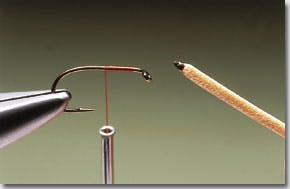
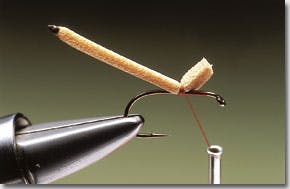
- Fix a wide-gape hook in the vice and run thread on halfway down the shank. Take a thin strip of foam and cut or melt it so that one end forms a point.
- Position the foam strip on top of the hook and fix it in place with turns of thread. This creats a detached body that should project well past the hook bend.
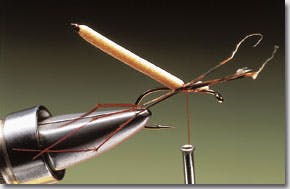
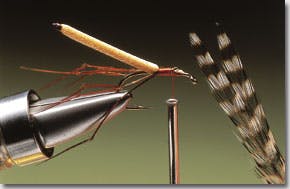
- Take a single fibre of cock pheasant tail and make two overhand knots in it to suggest leg joints. Repeat the process to create six legs. Place the fibres together, so the tips are level, and catch in three at the front of the body.
- Catch the remaining three legs in place on the other side of the body. Remove the excess feather and cover the butts with thread. Select two well-marked grizzle hackles which are slim and the same size.

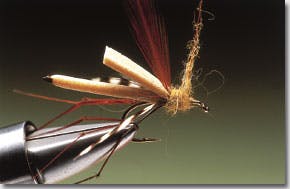
- Remove the fibres at the base of each feather to leave two hackle points. Catch them in at the front of the body so they sit flat on either side. Catch in a second strip of foam, slightly wider than the first.
- Prepare a long-fibred brown or ginger cock hackle and catch it in at the front of the foam strip. Take a pinch of light hare’s fur or tan Antron and dub it on to the thread. Wind to the eye.
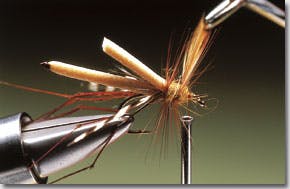
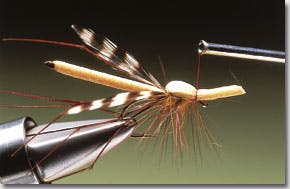
- With hackle pliers, take hold of the hackle and wind on three open turns. This keeps the effect sparse while ensuring the hackle works efficiently.
- Secure the hackletip at the eye with tying thread and remove the excess. Pull the foam strip over the back of the thorax and secure with thread. Do not stretch the foam too much as this reduces its buoyancy.
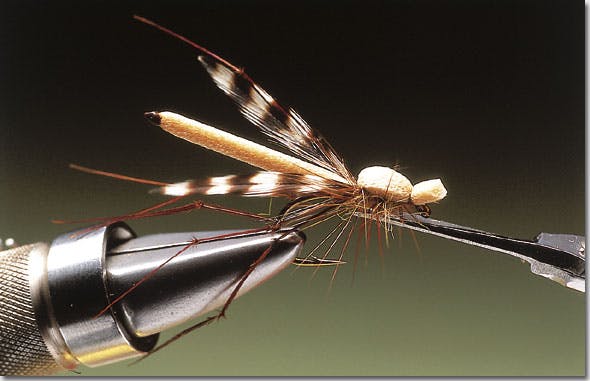
- Cast off the thread with a whip finish, trim the foam to leave a short head, then remove the hackle fibres that project beneath the hook, leaving only those at the sides.
WHERE, WHEN & HOW TO FISH
W H E R E
Works on all manner of lakes and reservoirs, especially those surrounded by grass, where the larvae of the adults live.
W H E N
Though various species of daddy-longlegs can be seen throughout the summer it is autumn when the greatest concentrations are found.
H O W
Tied with a detached body, the Daddy is fished as a standard dry-fly on a floating line. As it is so big and wind-resistant it is normally fished singly on a 12 ft leader of 6 lb-8 lb monofilament. Simply cast it out and allow the fly to drift along with the breeze. It can be fished either from a boat or, if from the bank, cast out with the wind behind the angler so that it is in the same place as the real daddy longlegs that are being blown on to the water.
T Y I N G T I P
Though six legs are the standard for an insect imitation, adding an extra two doesn’t put the fish off but does make the fly last longer.

